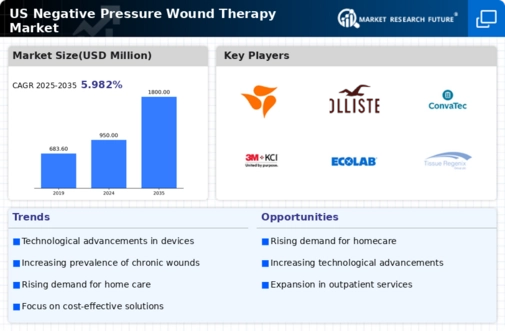The US Negative Pressure Wound Therapy Market is characterized by its rapid growth and a dynamic competitive landscape driven by technological advancements, increasing incidences of chronic wounds, and rising healthcare expenditure. This market involves a diverse array of players including established corporations, emerging companies, and innovative startups, all of which contribute to enhanced product offerings and strategic market maneuvers. Competitive insights within this market highlight the significance of product differentiation, robust distribution channels, and the ability to leverage partnerships for broader market reach.
Firms are increasingly focusing on research and development to deliver advanced solutions tailored to patient needs, thereby strengthening their market positions and expanding their share within this evolving sector.
Smith and Nephew holds a prominent position in the US Negative Pressure Wound Therapy Market, distinguished by its commitment to innovation and high-quality product offerings. The company’s strengths lie in its established reputation for delivering reliable and effective therapeutic solutions, as well as its extensive distribution networks that enable widespread accessibility of its products. This strong market presence is supported by ongoing investments in research and development, aimed at introducing advanced NPWT systems that enhance patient outcomes.
Smith and Nephew’s collaborative efforts with healthcare professionals and institutions further bolster its competitive edge, allowing for the incorporation of innovative feedback into product enhancements.
Medela is another key player in the US Negative Pressure Wound Therapy Market, recognized for its focus on patient-centric solutions and high-quality medical technology. The company’s product portfolio encompasses a range of NPWT devices that target diverse patient needs, underscoring its capability to serve both acute and chronic wound cases effectively. Medela's strengths include a strong commitment to clinical support and education, which adds significant value to its product offerings by ensuring that healthcare providers are well-equipped to utilize its technologies. Recent strategic expansions, potentially marked by mergers and acquisitions, have augmented Medela's presence in the US market.
This approach allows for greater integration of services and technologies, enhancing its competitive positioning and further solidifying its reputation within the realm of negative pressure wound therapy.



















Leave a Comment